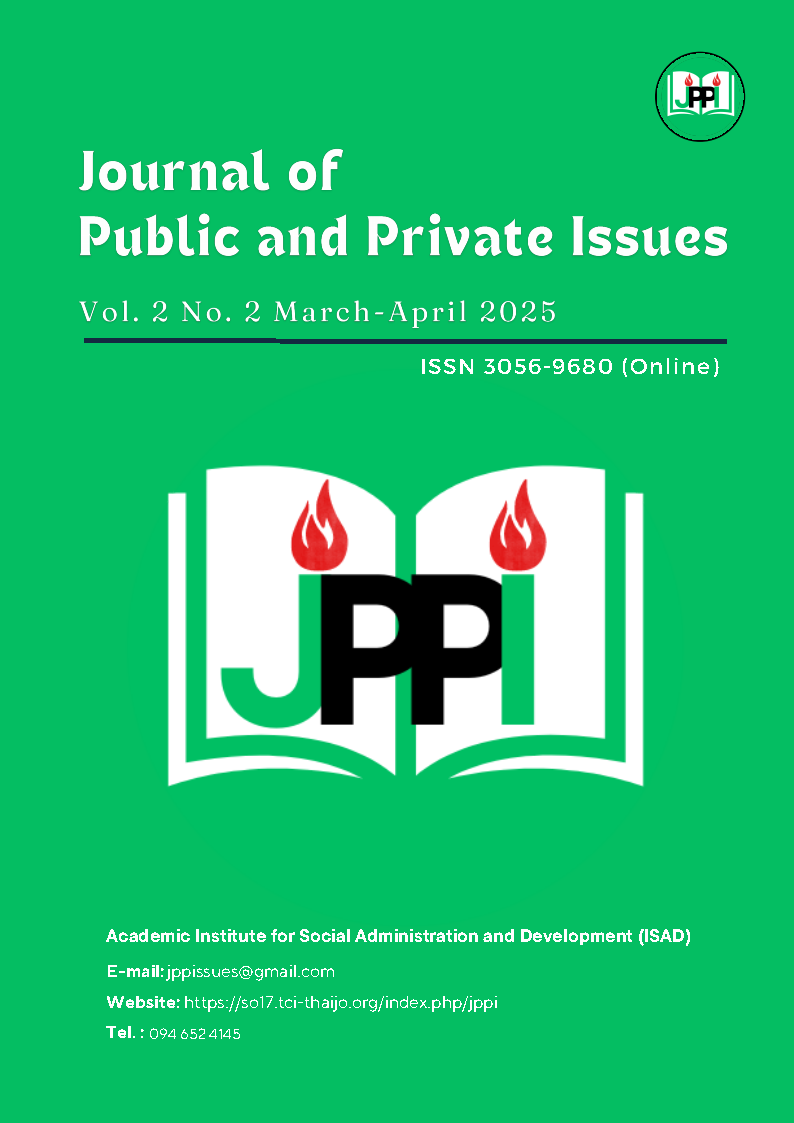Development of management guideline to improve classroom teaching by using modern media technology at Macau University of Science and Technology
คำสำคัญ:
modern media technology, teaching improvement, Macau University of Science and Technologyบทคัดย่อ
This article aimed 1) to investigate the types of modern media technology in classrooms at Macau University of Science and Technology, 2) to study the influence of modern media technology on teaching classrooms at Macau University of Science and Technology, and 3) to develop the management guideline on classroom teaching improvement by using modern media technology at Macau University of Science and Technology. The respondents were 333 students. The research instrument employed in this study was a questionnaire with 40 questions. The information and data collected were analyzed through the content analysis method and then presented in terms of frequency, mean, and standard deviation. The findings from the research indicated that: 1) types of applications of Modern Media Technology in the classroom was in middle level, and it is used in all aspects of students' learning and life, but it is not sufficient in the deep application, 2) the influence of application of Modern Media Technology in University classroom was in middle level, and 3) the management guideline on classroom teaching improvement by using Modern Media Technology at Macau University of Science and Technology consists of five units, namely: 1) Optimization of technical facilities and resources, 2) Establishment of evaluation and feedback mechanism, 3) Student participation and feedback mechanisms, 4) Teacher training and support, and 5) Resource integration and sharing.
เอกสารอ้างอิง
Alhammad, R., & Ku, H. Y. (2016). Graduate students' experiences and attitudes toward using e-books for college-level courses. Journal of Educational Research and Innovation, 5(2), 1-16.
Buckley, P., & Doyle, E. (2016). Gamification and student motivation. Interactive learning environments, 24(6), 1162-1175.
Chen, W. (2019). Research on the Application of Mixed Teaching Mode Based on Modern Educational Technology Taking the Application of "Rain Classroom". Network and Information Security Courses as an Example, Invention and Innovation Vocational Education.
Cuban, L., Kirkpatrick, H., & Peck, C. (2001). High access and low use of technologies in high school classrooms: Explaining an apparent paradox. American educational research journal, 38(4), 813-834.
Gikas, J., & Grant, M. M. (2013). Mobile computing devices in higher education: Student perspectives on learning with cellphones, smartphones & social media. The Internet and higher education, 19, 18-26.
Gómez-Carrasco, C. J., Monteagudo-Fernández, J., Moreno-Vera, J. R., & Sainz-Gómez, M. (2020). Evaluation of a gamification and flipped-classroom program used in teacher training: Perception of learning and outcome. National Library of Medicine, 15(10), e0241892. doi: 10.1371/journal.pone.0241892.
Li, F. (2023). The Application of Modern Media Technology in Moderns Interview. Digital Media Research, 40(3).
Liu, Y. (2010). Social media tools as a learning resource. Journal of Educational Technology Development and Exchange (JETDE), 3(1).
Lu, N., & Zhang, D. (2015). The impact of Modern media and Modern media technology on education. Modern Economic Information, 13.
Meng, R. (2021). Practice and Reflections on the Coordination Mechanism of Vocational Education of Press and Publishing in Across Regions: A Case Study of the Yangtze River Delta Press and the Publishing Vocational Education Innovation Alliance. CONVERTER, 2021(5).
Miangah, T. M., & Nezarat, A. (2012). Mobile-assisted language learning. International Journal of Distributed and Parallel Systems, 3(1), 309-318. https://doi.org/10.5121/ijdps.2012.3126.
Sadik, A. (2008). Digital storytelling: A meaningful technology-integrated approach for engaged student learning. Educational technology research and development, 56, 487-506.
Topîrceanu, A. (2017). Gamified learning: A role-playing approach to increase student in-class motivation. Procedia Computer Science, 112, 41-50. https://doi.org/10.1016/j.procs.2017.08.017.
Yamane, T. (1973). Problem to accompany statistics: an introductory analysis (3rd. ed). New York: Harper & Row.
Zhou, W. (2022). The Application of Network Information Technology and Resources in Russian Language and Literature Education. China Audio-Technology Education.
ดาวน์โหลด
เผยแพร่แล้ว
รูปแบบการอ้างอิง
ฉบับ
ประเภทบทความ
สัญญาอนุญาต
ลิขสิทธิ์ (c) 2025 Journal of Public and Private Issues

อนุญาตภายใต้เงื่อนไข Creative Commons Attribution-NonCommercial-ShareAlike 4.0 International License.









